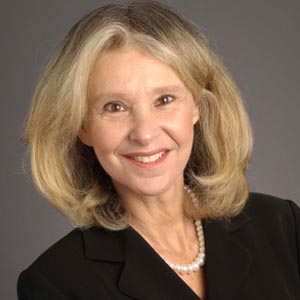The following article, Time to change how we think about early education, by Lillian Mongeau, appeared in the Hechinger Report, a nonprofit, independent education news organization based at Teachers College, on October 9, 2018.
The U.S. could learn a lot about early education from our international counterparts. That’s the conclusion of a comprehensive, multi-year study of six early education systems that are beating the U.S. on money spent per child, percentage of children enrolled and math achievement at age 15.

The project, published in September as a book called “The Early Advantage: Early Childhood Systems that Lead by Example,” takes a deep look at services for young children in Australia, England, Finland, Hong Kong, Korea and Singapore. The work was led by Sharon Lynn Kagan, Virginia and Leonard Marx Professor of Early Childhood and Family Policy, and Co-Director of the National Center for Children and Families, at Teachers College. The study was funded by the National Center on Education and the Economy, a think tank focused on the connection between education and economics.
| COUNTRY RANKINGS | |||
|---|---|---|---|
| PISA HIGH | PISA MEDIUM | PISA LOWER | |
| Economist high | Netherlands Republic of Korea |
Finland Belgium |
New Zealand Norway UK-England France |
| Economist medium | Hong Kong Switzerland |
Germany Austria |
Czech Republic |
| Economist lower | Japan Singapore Taiwan |
Canada Australia |
|
| SOURCE: THE EARLY ADVANTAGE: EARLY CHILDHOOD SYSTEMS THAT LEAD BY EXAMPLE |
“There are incredible lessons from these other countries,” Kagan said. The lessons “manifest themselves not only in what we can do but in how we actually think about young children and the services for them.”
Related: Is universal preschool the answer? Britain says ‘yes’
In the U.S., caring for young children has long been considered the responsibility of individual families, not the government. With the exception of a few times in history where it was considered a national priority to bring women into the workforce temporarily, publicly funded child care has remained low on the list of programs receiving federal dollars. The federal money that is spent, mostly on preschool for 3- and 4-year-olds living in poverty (through programs like Head Start) and on helping states provide subsidized child care, is generally considered assistance for families struggling to make ends meet.
While all of the countries studied for “The Early Advantage” have low-income populations in need of extra assistance to provide their young ones with quality child care and education, none of them make income level a requirement for services. Instead, these countries offer near-universal systems that guarantee some level of education for children age 3 and older. Five of the countries, Hong Kong excepted, also offer provisions for infants and toddlers, whether it be subsidized care or extended (compared to the U.S.) paid parental leave.
“For many countries, investments in young children are the mark of prudent thinking and wise resource allocation,” Kagan writes, “often approaching the top of the list of requisite investments.”
Not so in the U.S., where both per child spending and total pre-primary enrollment lag far behind other well-to-do nations.
Related: Full-day kindergarten is great for kids, so why isn’t it required?
“It really goes back to founding fathers,” Kagan said. “We were established to escape government tyranny. It’s always been a hands-off mentality.”
The “hands-off” ideal is not so far removed from where other nations profiled in the book started out just a few decades ago. In Singapore, for instance, Kagan and her team found that the majority Chinese population tends to value family and the family unit above all else. “The family plays a key role in keeping society orderly and maintaining a culture of hard work, thrift, filial piety and respect for elders, scholarship and learning,” Rebecca Bull and Alfredo Bautista write in the Singapore chapter of “The Early Advantage.”
For centuries these ideals, inspired by the Chinese philosopher Confucius, have meant that governments “should not take over the important role of the family, which should be capable of fulfilling the needs of those individuals who belong to it,” Bull and Bautista write. However, equality of opportunity, community support for the individual and the goal of being a true meritocracy are also dearly held values in Singapore and it was these, combined with the threat of a persistently low birth rate, that led the country to invest heavily in early childhood education starting in the late 20th century.
Today 79 percent of children aged 2 to 4 are enrolled in some form of heavily subsidized early childhood care and 90 percent of children are enrolled in early childhood education before beginning primary school. (Most children younger than 2 years old (80 percent) are cared for by extended family members or nannies.)
Singapore’s system, though regulated and subsidized by the government, is still mostly private. Individual centers are owned and run by private citizens. Those that meet quality and affordability criteria are offered financial incentives from the government that also help keep tuition affordable for families.
As in the U.S., early childhood teachers are hard to find and hard to retain in Singapore. The job is paid poorly and considered to have minimal prestige. Also, the government and many early education professionals have accepted the Western idea that play should be valued more highly for the youngest children but is not yet a widely held belief among Singaporean parents who often hold rote learning in high regard.
Related: Making the preschool magic last as children get older
These challenges and others mean that Singapore is a long way from boasting a perfect system. In fact, though they serve a higher percentage of children, Singapore and Australia both rank slightly lower than the U.S. on overall early education quality according to the evaluation by the Economist Intelligence Unit, a think tank used by the Early Advantage researchers to help select countries worth profiling. But both countries’ teens score better than the U.S. on international math assessments, the other measure used to select participating countries. (Countries had to be in the top 30 on both measures to be considered. The U.S. ranked 24th in quality and 31st in math.) Despite having a way to go however, Singapore and Australia are making early education a top priority, something the U.S. cannot claim, despite recent progress.
Here is some of what the five other countries are doing and how they are thinking:
Australia
- PHILOSOPHY: Australians idealize the notion of giving everyone “a fair go” and see improving their early childhood education system as a way to better live up to this principle.
- SERVICES: Preschool is universally available to 4-year-olds for 15 hours per week. States run independent early childhood systems, but all are subject to standards laid out in the National Quality Framework, which was established in 2009. Most families with younger children receive subsidies for their child care needs that cover 50 to 90 percent of the total cost of care. Lower income families receive larger subsidies.
- CHALLENGES: Australia squeaked into the study with medium math scores and a fairly low ranking (28th) on early education system quality. Historically poor treatment of the country’s indigenous population is one legacy the country hopes to overcome with better early education.
England
- PHILOSPHY: Early childhood services are part of the “reform, not revolution” ethos England has held for centuries and which it has brought to its post-World War II attempts to reduce inequalities between rich and poor families.
- SERVICES: All children over 3 with working parents are eligible for 30 hours of free child care and education in either a public or private child care center or by a certified home-based care provider. Those with non-working parents and the 40 percent of 2-year-olds from the lowest income families are eligible for 15 hours a week of funded care. Children who are age 4 on Sept. 1 can attend government-funded primary schools and 5-year-olds are mandated to attend primary school from their fifth birthday. Mothers are also granted nearly nine months of paid leave after the birth of a child.
- CHALLENGES: Staff at publicly funded institutions are better qualified and better paid than those working at private facilities, a gap that has been hard to close. There is concern that the reimbursement rate the government provides for 30 hours of care per week is insufficient to provide high-quality care. Some experts wish the “extra” money used to extend service hours from 15 to 30 per week in 2017 had been spent on raising the quality of the services instead.
Finland
- PHILOSPHY: The Finnish ideals of universalism, social rights and equality dictate that all citizens are entitled to education, health care and other services needed to enhance their well-being.
- SERVICES: All children from infancy to age 6 are eligible for free care. Pre-primary education starts at age 6 and is compulsory. Parents are eligible for paid leave for up to three years and receive a monetary benefit per child. Correspondingly, just 0.8 percent of infants, 29 percent of 1-year-olds, and 52 percent of 2-year-olds are enrolled in care. Enrollment numbers shoot up at age 3.
- CHALLENGES: As private early childhood care provision increases and migrant populations grow, the Finnish system must adapt to new quality regulation challenges and the needs of an often poorer and less well-educated population.
Hong Kong
- PHILOSPHY: A blend of Chinese and Western values have led to a sense that children and families should be supported in early learning both in order to be prepared for primary school and to have an equal shot at success regardless of their income level.
- SERVICES: All children ages 3 to 6 are offered free child care or kindergarten. The system is entirely private, though heavily regulated and subsidized by government. Many parents supplement the free care provided with paid care to cover all of their working hours. Low-income families receive proportionally more assistance than higher income families.
- CHALLENGES: About 20 percent of 3- to 6-year-olds are enrolled in “elite” programs for which they receive no government support. These programs tend to be higher quality and evidence a gap between what higher and lower income families can access. There is also little care provision for children under age 3 and a lack of corresponding family leave policies to help parents care for infants and toddlers.
Korea
- PHILOSPHY: Having rebranded itself as “dynamic Korea” in 2014, this future-oriented country sees the education of its youth as the investment that will guarantee its continued economic success. Faced with a low birth rate and few valuable natural resources, this emphasis has become even greater in recent decades.
- SERVICES: Parents of young children are granted “i-Happiness” cards loaded with funds to cover free full-day care for children from infancy to age 2 and at least a half day of preschool for 3- to 5-year-olds. Parents often have to pay to make up the difference in cost between half- and full-day care.
- CHALLENGES: The Korean program got the highest marks for both quality and teen academic achievement in math of any country included in the study. There is some concern that quantity has been prized over quality and that more needs to be done to ensure all children receive high quality care. Also, the private, mostly for-profit nature of the early childhood market is sometimes at odds with the government’s efforts at quality regulation and cost control.
The complete study is available for purchase from Teachers College Press or on Amazon. Kagan said she hopes it provides both pragmatic and philosophical ideas for helping the U.S. get to the point of upping its investment in the early years. “We really need to move beyond the conventional,” she said, “not just what other countries are doing, but how other countries are thinking.”
